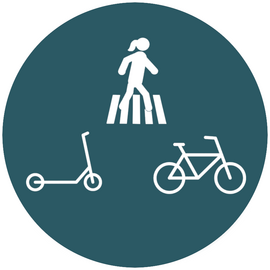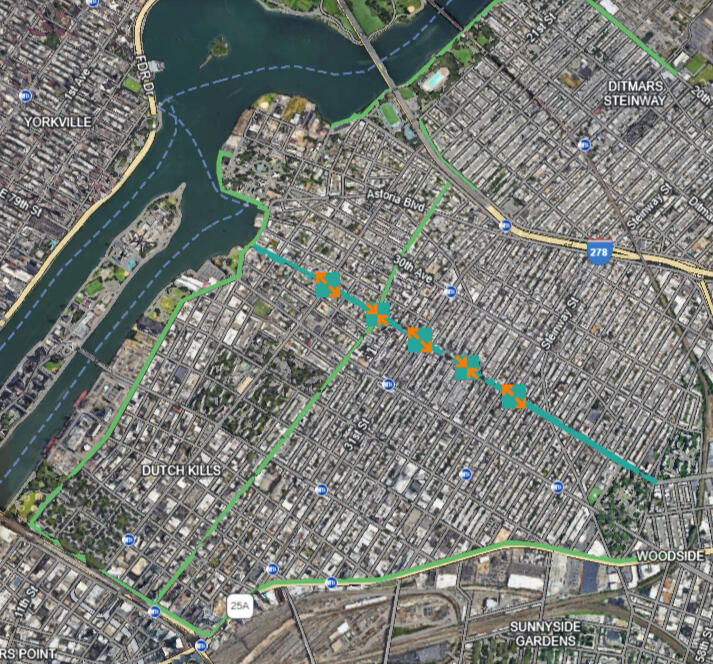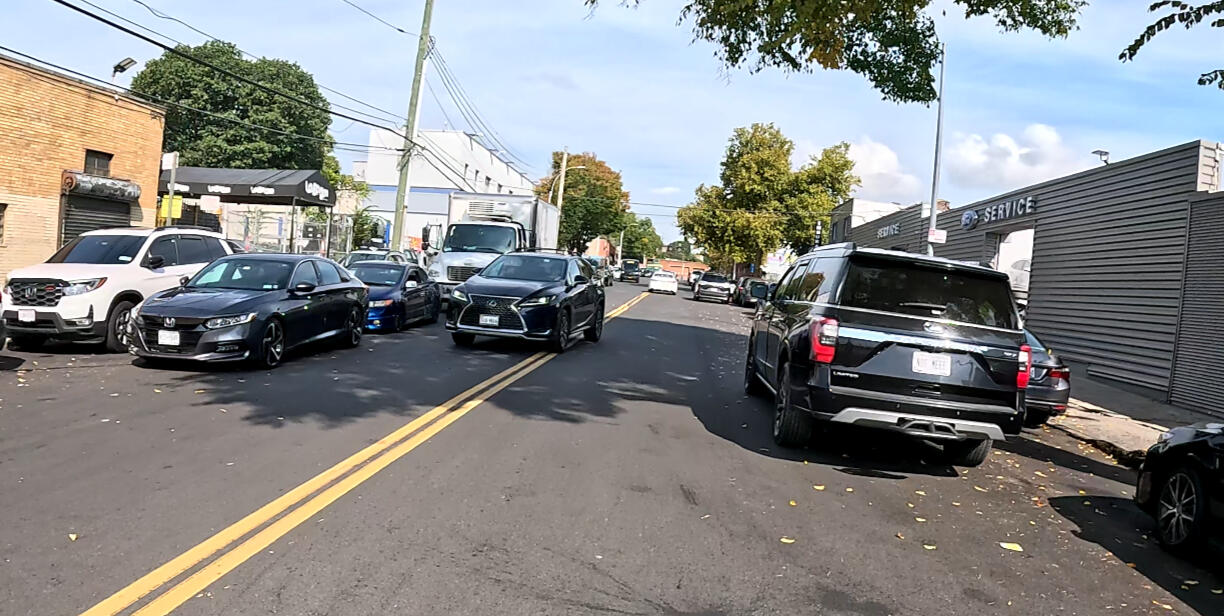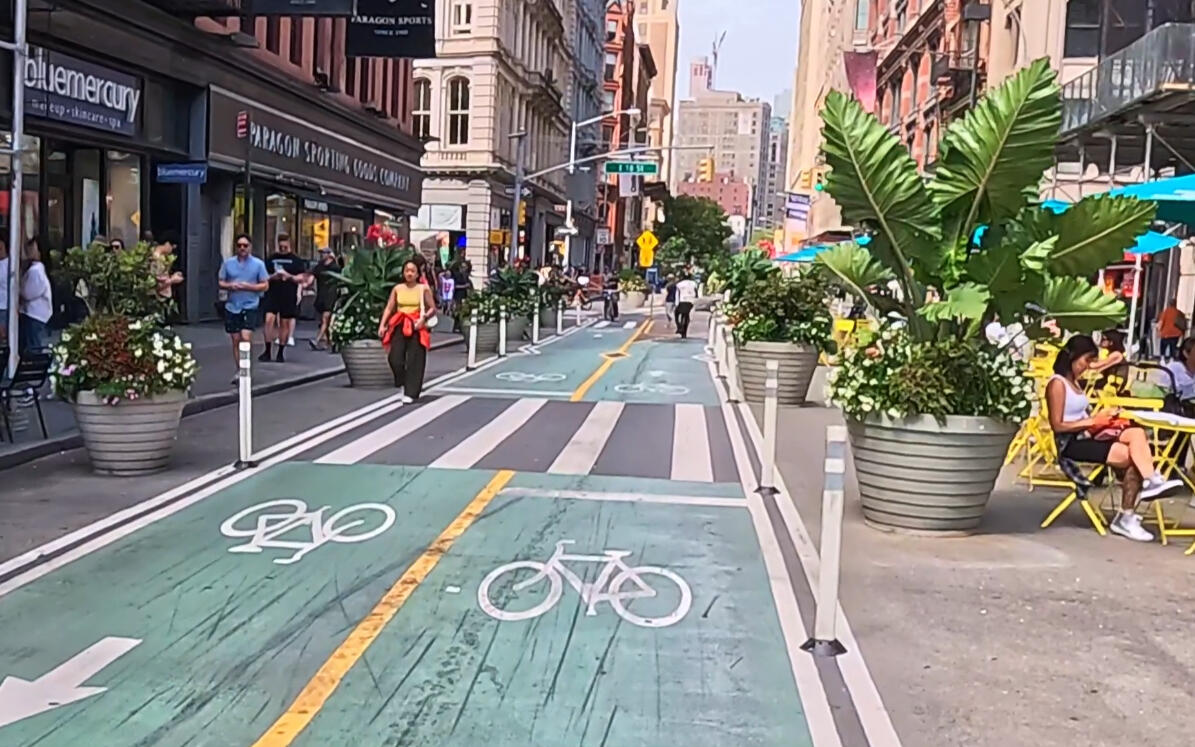
CITY OF NEIGHBORHOODS PLAN
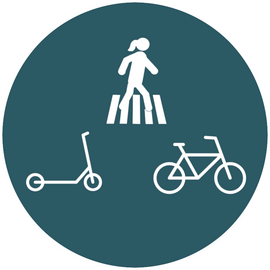
INTRODUCTION
The streets of New York City are often hostile to those that live here. The movement and storage of cars dominates a wildly disproportionate amount of public space despite the city's preeminent status as the nation's foremost pedestrian and transit city.It's time to end the honking, gridlock clogged streets, and to prioritize urban appropriate transportation networks. We can make beautiful, comfortable urban places, but we must cast aside the suburban mindset that has failed the city for decades.
Too many of our streets still look like this:
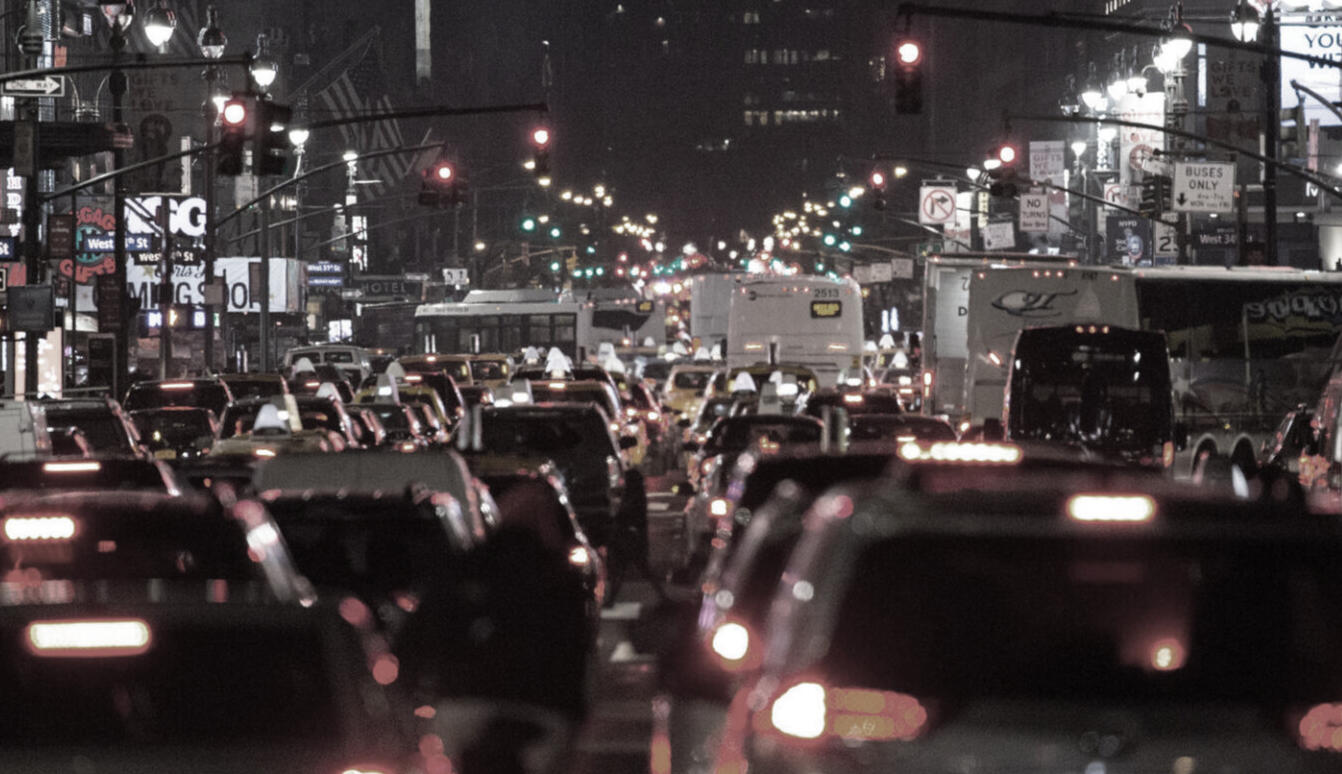
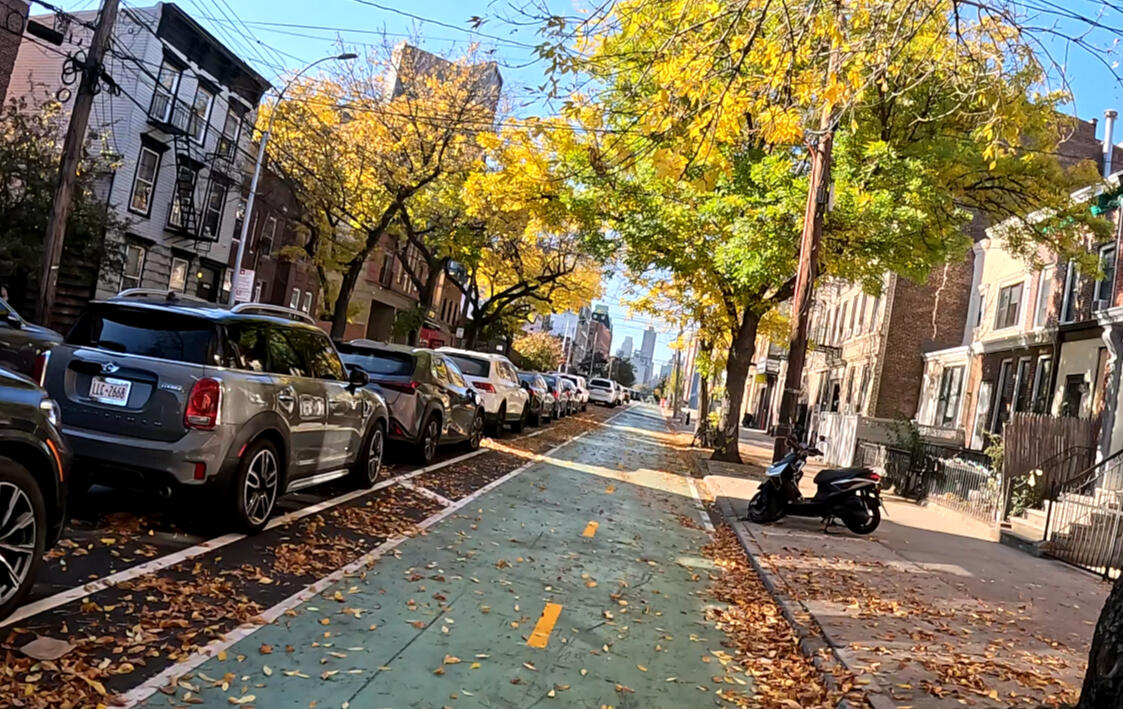
And there is a far better way.
Executive Summary
APPROACH
⚡This plan includes street treatments and design philosophies that work together to create a street-scape that is functional beyond the sum of its parts. As such, it should be implemented with a whole-neighborhood approach.In other words, one neighborhood should be selected for a total neighborhood transformation, to demonstrate what the complete plan looks and feels like, rather than a piecemeal approach that could takes many years or decades to complete.For the purposes of the plan, we will use Astoria, Queens.
PEDESTRIAN CORES
A small central location inside every neighborhood where businesses and restaurants are clumped should be identified and the area pedestrianized. This means private motor vehicle traffic will be reduced to only residents and deliveries, to encourage a livable urban space.This improves business and tax revenue, by generating foot traffic, (the number one determinant of an urban business's success.)Contrary to outdated business “wisdom,” car parking is not a major determinant for sales in a city -- in fact, it is detrimental to it. Parking wastes extraordinary amounts of space and creates an unpleasant environment hostile to pedestrians.

Naturally, deliveries by truck and access to city services will be allowed, and any bus service will be maintained and prioritized (and flow far smoother.)
The pedestrianized core will also function as a central hub for a larger street design network of protected bike lanes and Neighborhood Streets.

CURRENT BIKE LANES
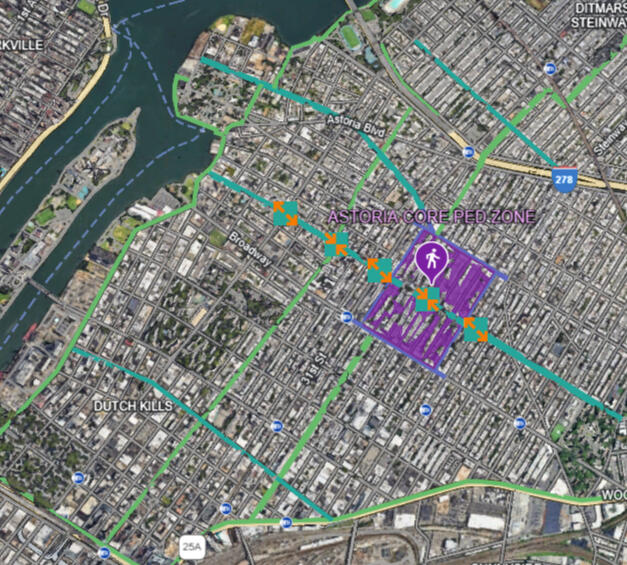
WITH PED CORE + FEEDER LANES
STREET TREATMENTS
- DAYLIGHTING
Daylighting is the process of keeping the space near crosswalks clear, so drivers and pedestrians can see each other. It is required by state law, but NYC has exempted itself from implementing it to maximize parking spaces. This leads to many unnecessary deaths, especially children who are not tall enough to see over car hoods, and often can not be seen by drivers before being hit. Every intersection in NYC will be daylit, enforced by filling the space with bike share racks, curbs, bioswales and small plants, or bollards to prevent car parking.
Being killed by a car is the leading cause of death in children under 13 by a wide measure. Daylighting every intersection is a moral imperative.Many other treatments will be widely used. These include:
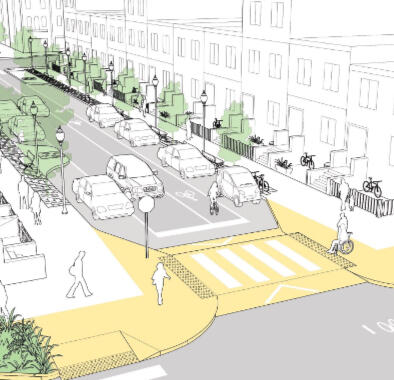
Bulb outs

Chicanes
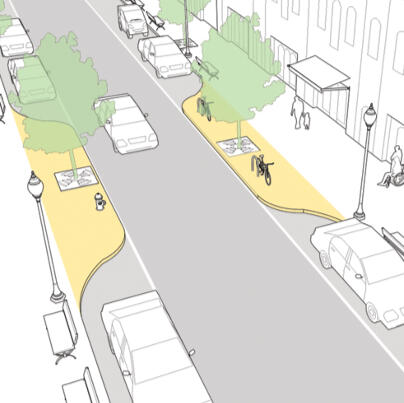
Pinchpoints
UNIVERSALITY
These treatments should be applied at scale, universally.The city's current approach of doing them in small numbers, sporadically located, is like renting an apartment and realizing the landlord didn't finish the floor renovations. Instead, there are unsafe conditions everywhere with nails popping up through the floorboard. In such a situation, nobody would go around sporadically bending a nail flat here and there. We’d fix all the nails. We’d make the entire floor safe.
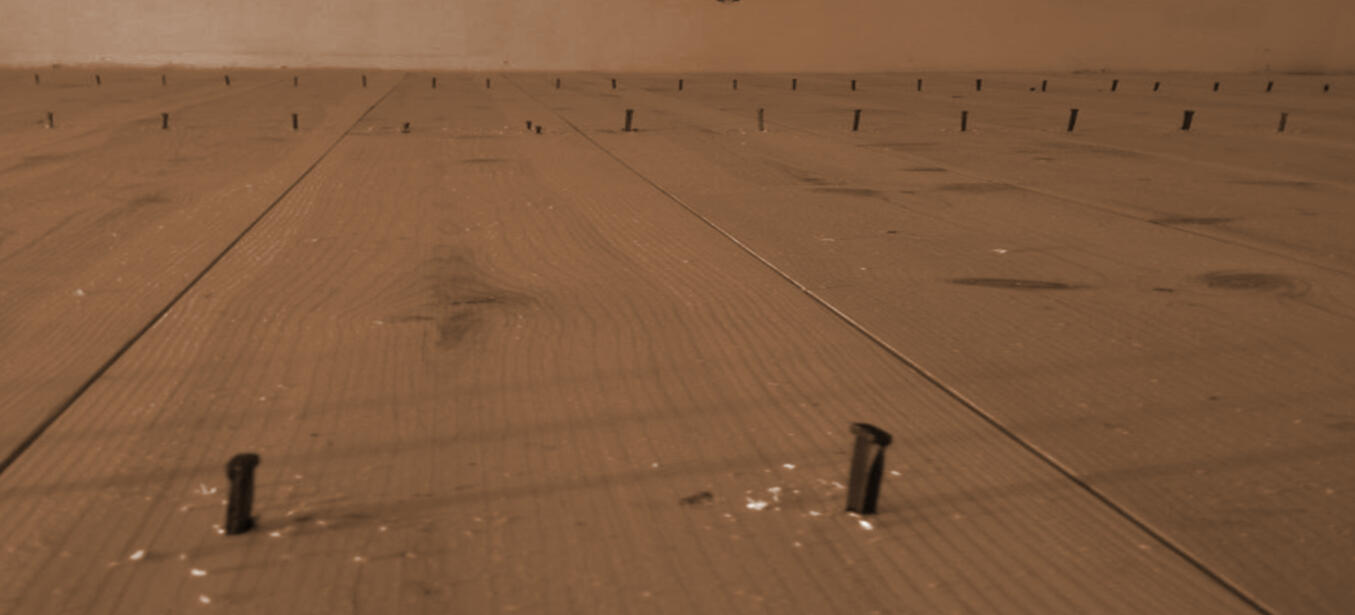
Traffic control
We must admit a fundamental flaw at the heart of our urban design over most of the past century. At its most basic level, we have built our city so that cars can travel everywhere, at all times, via the most direct route.Instead, we must begin strategically controlling the movement of cars, so that long-distance travel between neighborhoods (or further) happens on designated streets of our choosing and residential streets are protected from them.This is not hypothetical or untested. Consider the city of Ghent, Belgium:
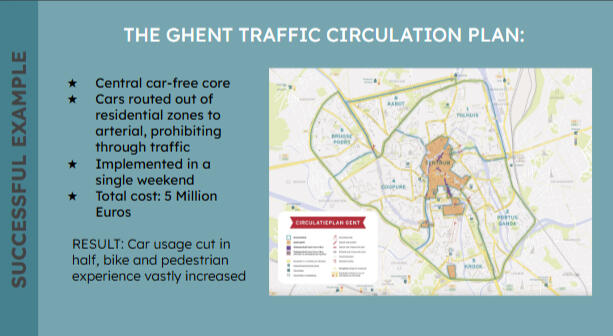
The majority of the work required to implement this plan was simply switching the direction of streets, utilizing easy-to-install signage. This ensures that drivers looking to traverse the city can only do so on designated routes, instead of cutting through anywhere.
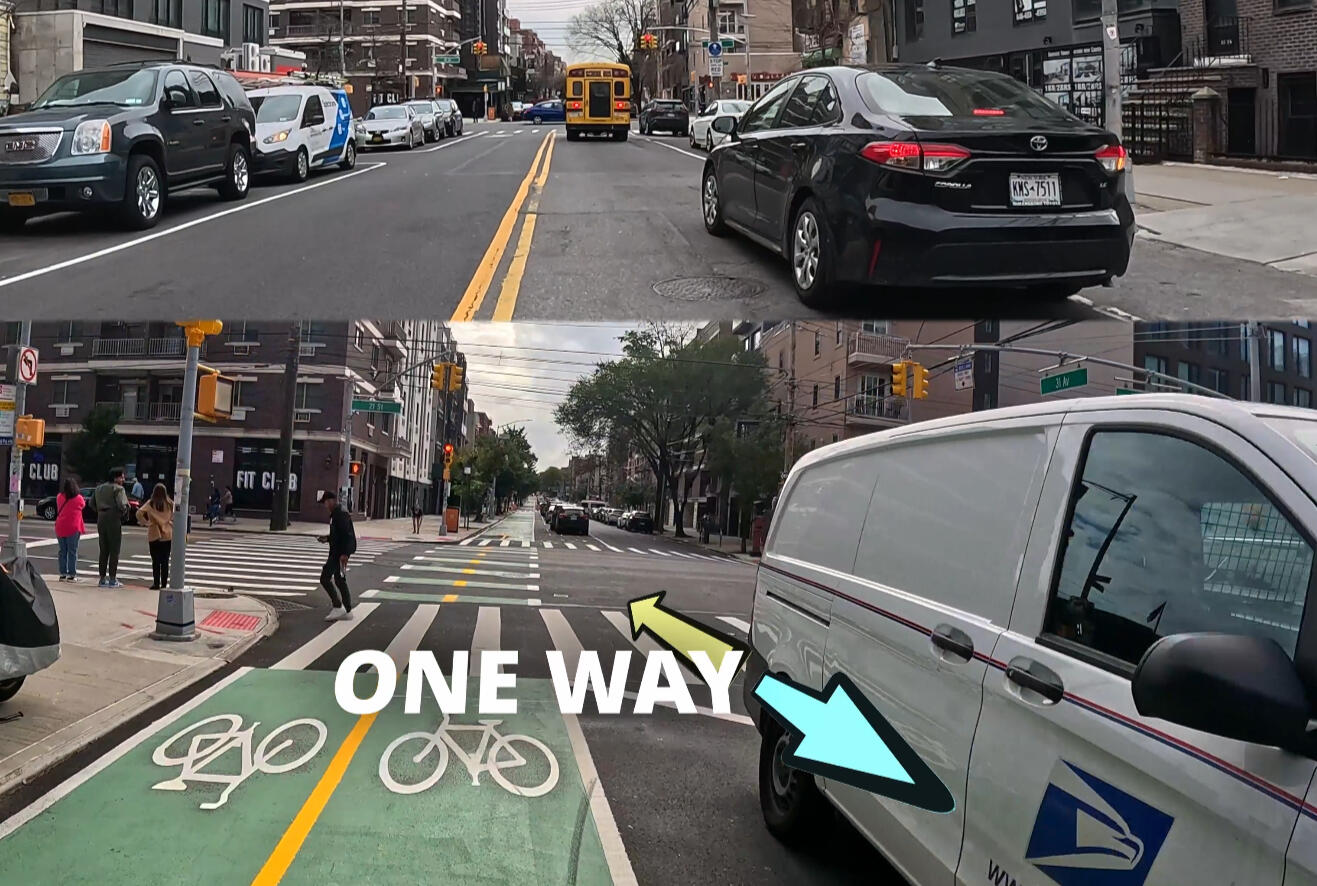
New York City is obviously a far larger city than Ghent, but the principle is the same, and the process of applying this logic to NYC begins at the neighborhood level. First, we select the streets on which through traffic will be permitted. That is to say, which will allow long distance travel (between neighborhoods or long distance within a single neighborhood.)
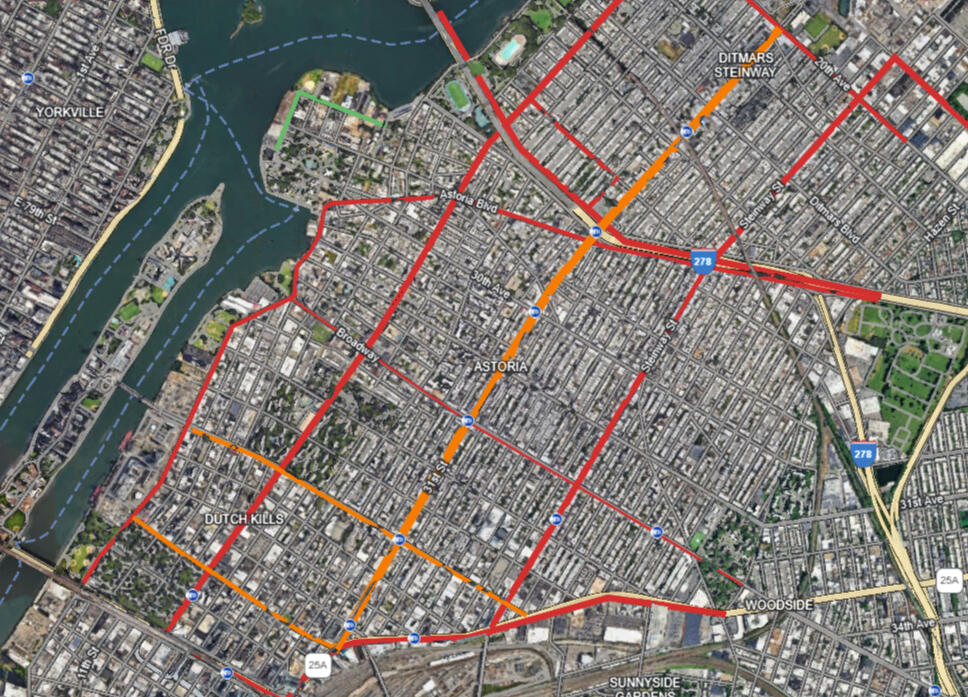
After these streets have been identified, direction of travel on the remaining streets should be changed so that traffic is always routed back towards one of these thoroughfares. In this way, every point within the grid can still be accessed, yet only some of the streets are major traffic corridors.
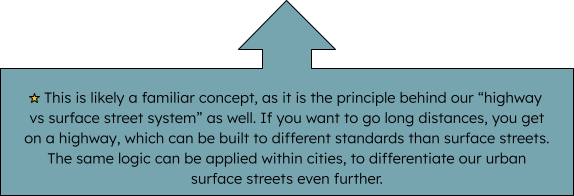
This process has already been implemented in small measures in NYC, most famously on the wildly successful 31st Ave, which reduced a 2-way street (for cars) down to 1, and then strategically switched the direction of travel every few blocks.

All vehicular based services (fire trucks, police, trash trucks, etc) are still permitted and those that live on the street can still drive to their homes if they choose, but those that want to simply use the street to drive long distances in a car, cannot – and must choose a different route.
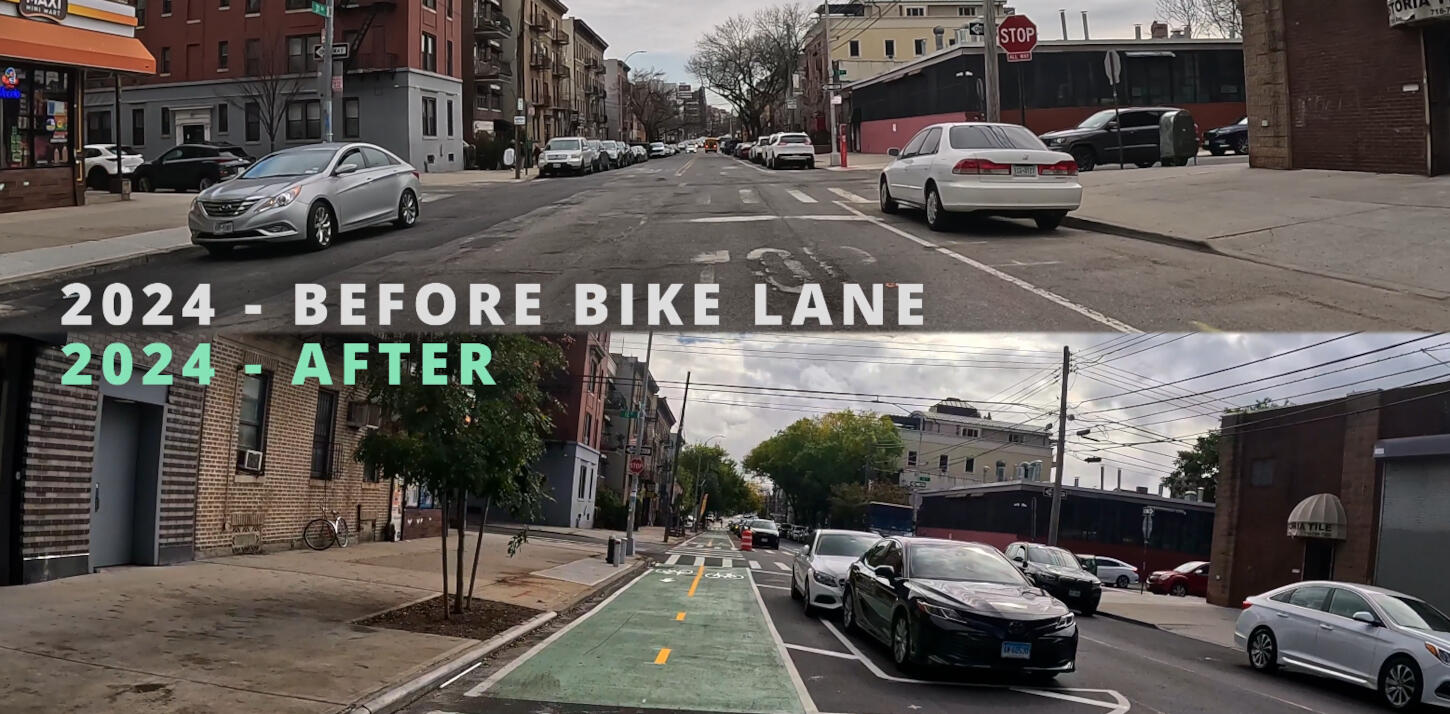
The end result is a “Bike Boulevard” with little motor traffic besides the occasional resident or delivery. This enormously benefits those that live on and near it. Suddenly, the residential Neighborhood Street is far quieter, easier to traverse, and more enjoyable for walkers and micromobility riders. This is how quality of life can be drastically improved for city residents.
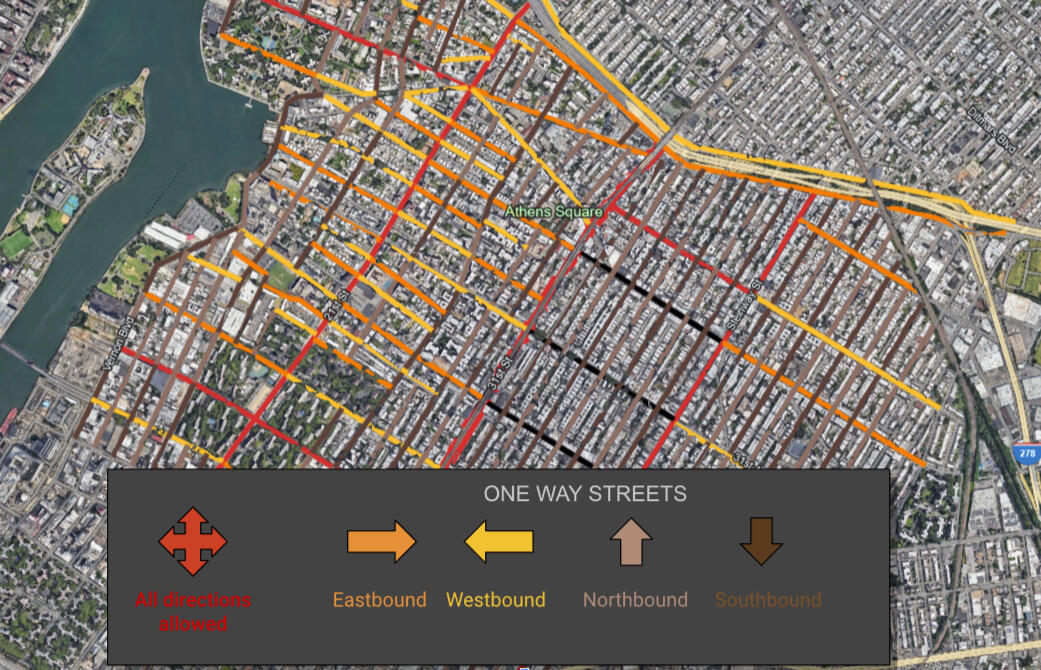
Strategically alternating the direction of travel forces drivers to move towards the main car streets.This also brings some streets that are currently 2-way down to 1-way. The reclaimed space can then be used for expanded sidewalks and pedestrian spaces, tree pits, bioswales for drainage, bike lanes, and many other more beautiful and beneficial purposes for residents.It makes many trips by car less direct at the very beginning or end of a journey. This is intentional. Converting urban streets to indirect, less immediately accessible routes is not a weakness, it is a strength. It prioritizes local residents' quality of life by minimizing traffic.
Bike Boulevards and Open Streets
Far too many residential neighborhoods in NYC are overrun by cars, pushing out the vital functions of urban life. Kids are lagely unable to play or have independence outside the home, residents are in danger merely walking outside, and fumes and noise permeate everything.

A typical NYC street
Bike boulevards and Open Streets fix these issues by removing all but the most necessary of vehicular travel. They still maintain access for all vehicular based services and car access for residents, yet prevent through traffic via traffic diverters and directional switching.They also encourage and enable urban appropriate methods of transportation. According to the city’s own data, there are typically over 600,000 trips taken by micromobility per day, and nearly 1 in 8 residents ride regularly.
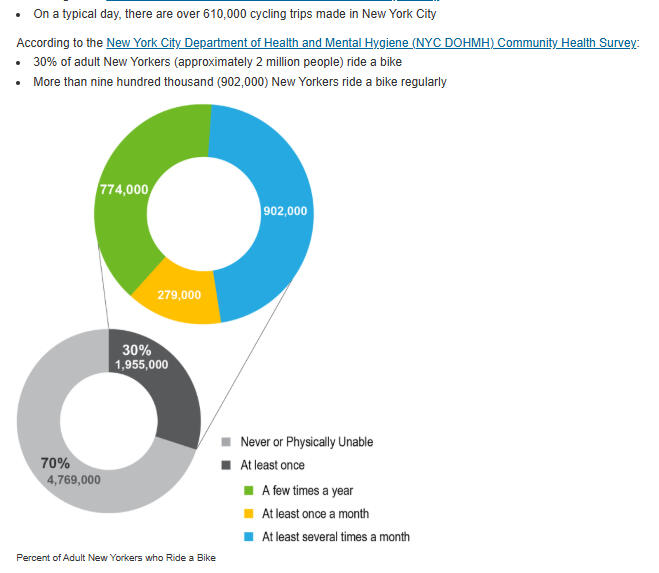
This is despite less than 1% of the road surface being dedicated to micromobility, and a general feeling among many that the activity is unsafe. With infrastructure that actually allows all ages and abilities to participate (which our bike lanes are supposed to be) this number will be exponentially higher.These streets will also enable freedom of movement for many who are typically excluded now, including children, the elderly, and disabled who will in the coming years have access to long range electric wheelchairs that can serve as full transportation systems if they have access to safe, car-light infrastructure.
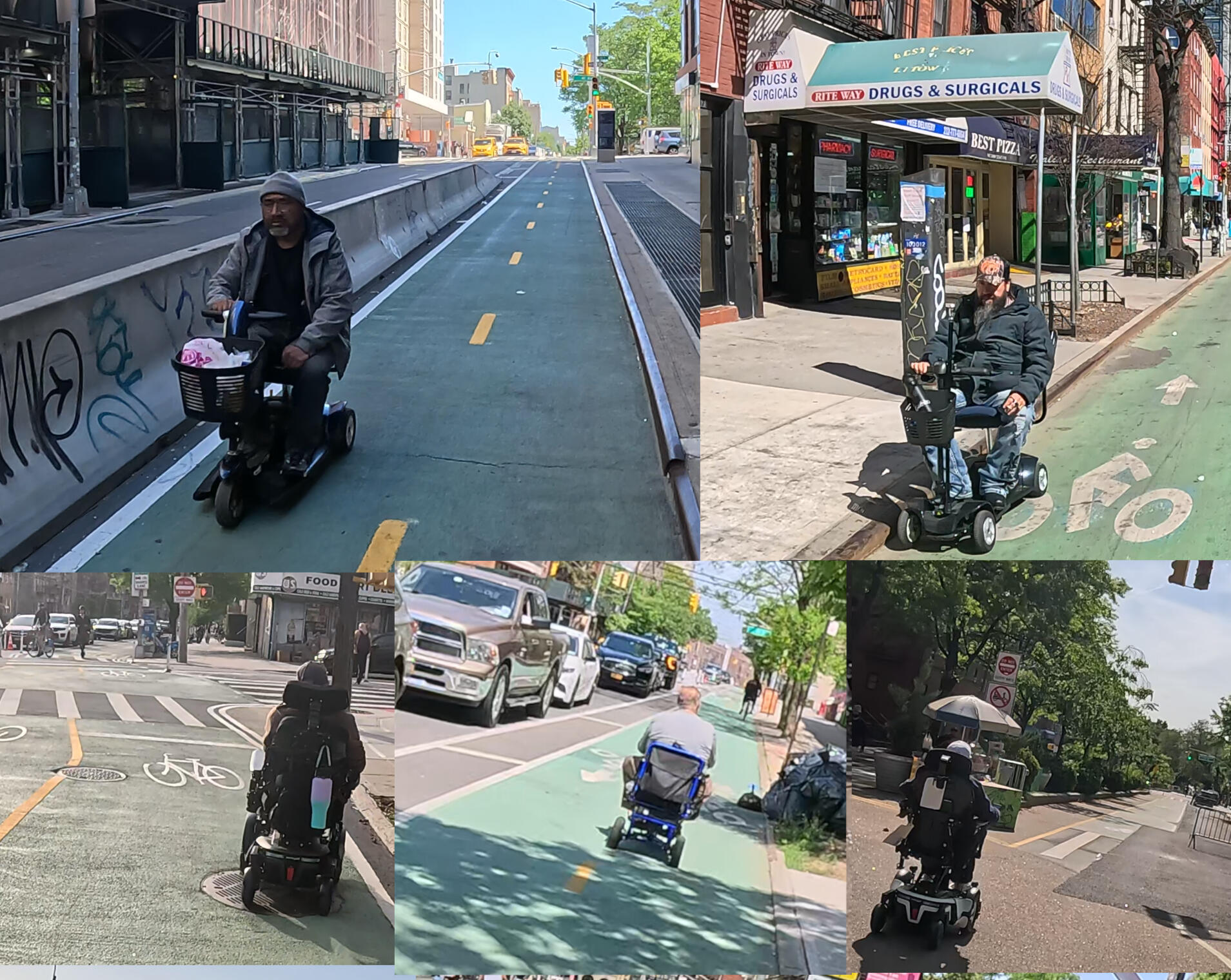
The climate crisis, livability standard, and basic fairness require us to make the city safe, appealing, and accessible for these groups as well.
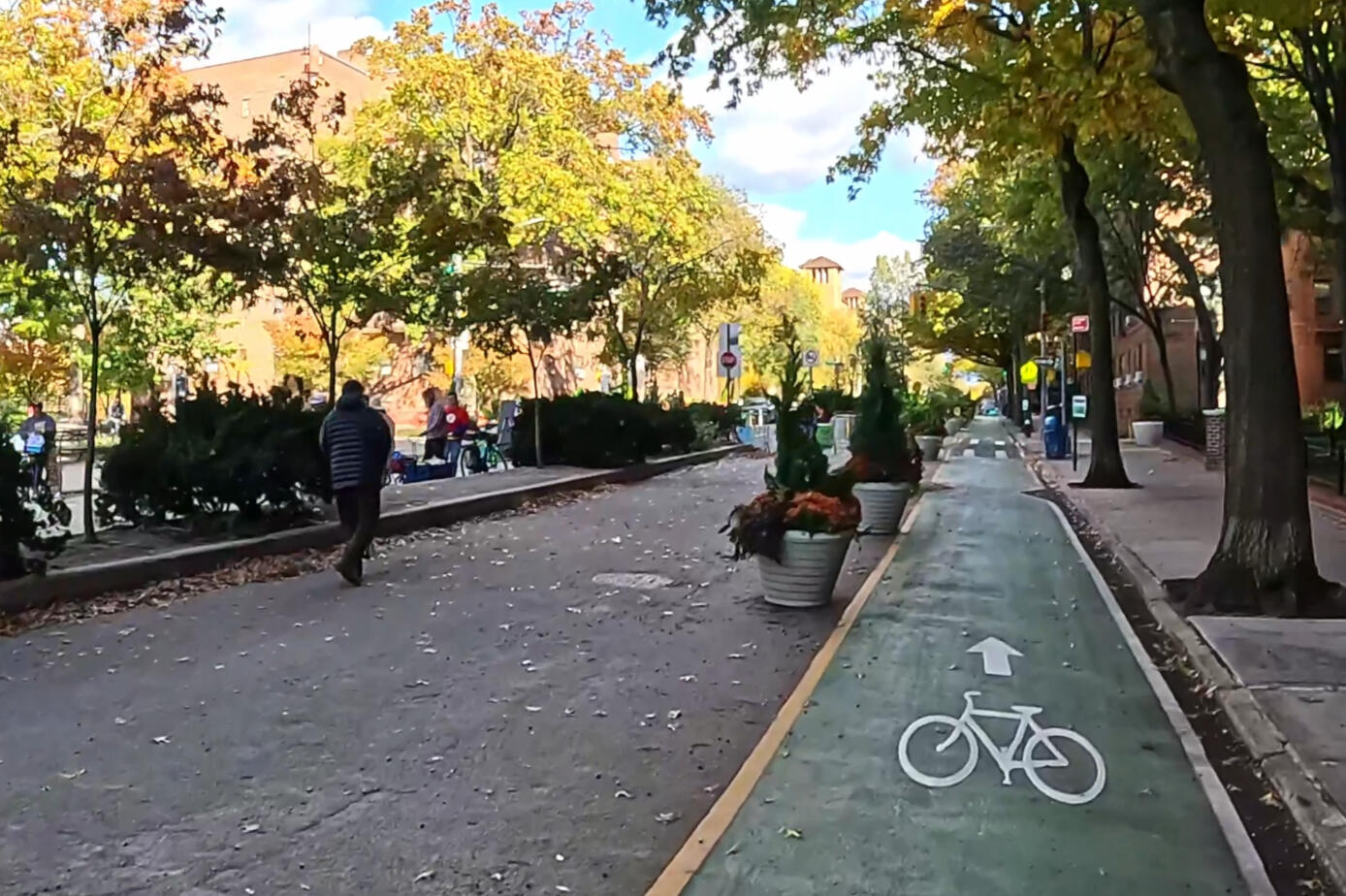
(34th Ave Open Street plaza block section, which puts residents above the movement and storage of cars)

CITY OF NEIGHBORHOODS PLAN
This plan was lovingly constructed by Miser, the founder and organizer of the MicromobilityNYC community.
You may contact him directly on Reddit or Bluesky, or by emailing [email protected]
